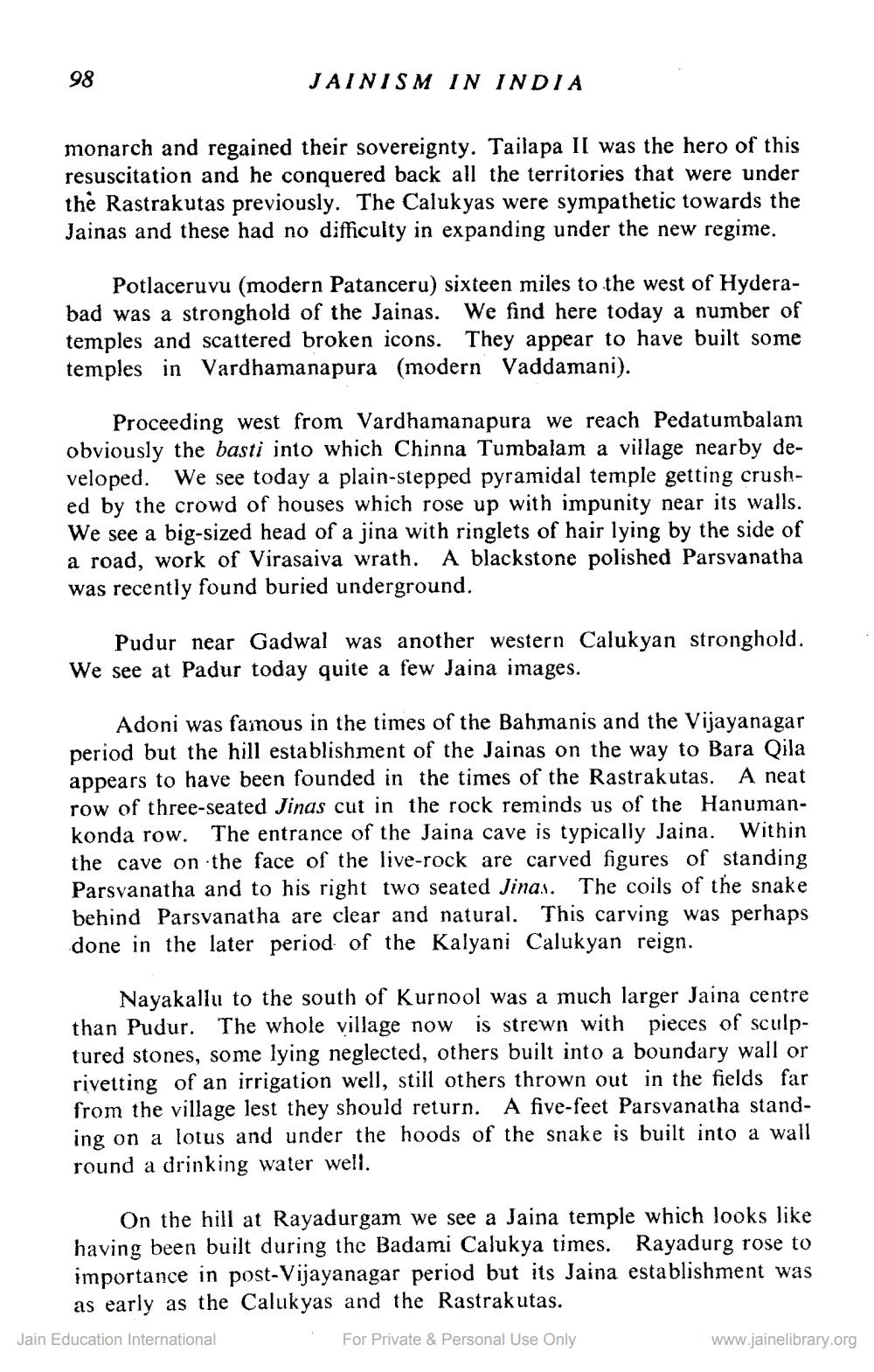________________
98
JAINISM IN INDIA
monarch and regained their sovereignty. Tailapa II was the hero of this resuscitation and he conquered back all the territories that were under the Rastrakutas previously. The Calukyas were sympathetic towards the Jainas and these had no difficulty in expanding under the new regime.
Potlaceruvu (modern Patanceru) sixteen miles to the west of Hyderabad was a stronghold of the Jainas. We find here today a number of temples and scattered broken icons. They appear to have built some temples in Vardhamanapura (modern Vaddamani).
Proceeding west from Vardhamanapura we reach Pedatumbalam obviously the basti into which Chinna Tumbalam a village nearby developed. We see today a plain-stepped pyramidal temple getting crushed by the crowd of houses which rose up with impunity near its walls. We see a big-sized head of a jina with ringlets of hair lying by the side of a road, work of Virasaiva wrath. A blackstone polished Parsvanatha was recently found buried underground.
Pudur near Gadwal was another western Calukyan stronghold. We see at Padur today quite a few Jaina images.
Adoni was famous in the times of the Bahmanis and the Vijayanagar period but the hill establishment of the Jainas on the way to Bara Qila appears to have been founded in the times of the Rastrakutas. A neat row of three-seated Jinas cut in the rock reminds us of the Hanumankonda row. The entrance of the Jaina cave is typically Jaina. Within the cave on the face of the live-rock are carved figures of standing
arsvanatha and to his right two seated Jinas. The coils of the snake behind Parsvanatha are clear and natural. This carving was perhaps done in the later period of the Kalyani Calukyan reign.
Nayakallu to the south of Kurnool was a much larger Jaina centre than Pudur. The whole village now is strewn with pieces of sculptured stones, some lying neglected, others built into a boundary wall or rivetting of an irrigation well, still others thrown out in the fields far from the village lest they should return. A five-feet Parsvanatha standing on a lotus and under the hoods of the snake is built into a wall round a drinking water well.
On the hill at Rayadurgam we see a Jaina temple which looks like having been built during the Badami Calukya times. Rayadurg rose to importance in post-Vijayanagar period but its Jaina establishment was
as early as the Calukyas and the Rastrakutas. Jain Education International For Private & Personal Use Only
www.jainelibrary.org




